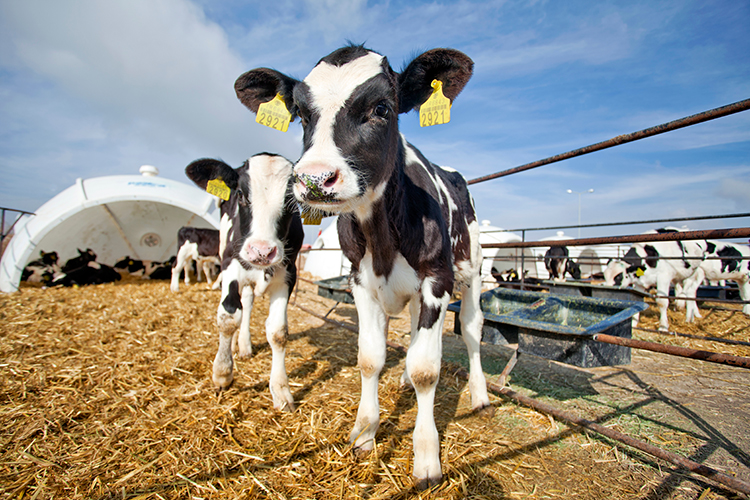
Remember that healthy, happy calves start as hydrated calves.
With all the challenges and pitfalls of the past few years, many large and small dairies have reflected on new management strategies to increase production efficiencies, conserve precious resources like water, and develop new revenue streams like exploring beef-on-dairy crossbred cattle.
Beef-on-Dairy Cross Calves Are a Reliable New Revenue Stream
Before the days of advanced genetics and sexed semen, it was common for most dairy farmers to keep the top 25% of their heifer calves for replacement, sell the rest, and sell all the bull calves at lower market values. As genetic testing and artificial insemination (A.I.) became more accessible to dairy farmers, a new idea took root. Farmers could breed the bottom 50% to 75% of their dairy cows to high quality beef breed bulls using A.I.. Breeds such as Angus, Limousin, Simmental, and Gelbvieh could substantially increase the value and marketability of a dairy farm’s calves. Producers immediately saw a return on their investment with day old beef-on-dairy calves worth $100 more per head than day old Holstein or Jersey calves. Calves weighing 450 to 500 pounds are worth $200 more than their dairy breed counterparts. These calves eventually finish out at 1,350 to 1,450 pounds (live weight) and grade in excess of 80% Choice and 20% Prime.
According to CattleFax analyst Mary Kurzweil, there are an estimated 2 to 3 million beef-on-dairy cross cattle in the U.S. and the population is projected to expand to 4 to 5 million cattle in the next three to five years.
How to Prepare for Beef-on-Dairy Success: From Day One, Calf Care is Key
Dairy producers who are thinking of exploring the beef-on-dairy option need to start with the basics of calf care – fresh water, proper nutrition, and a comfortable, social environment for the calves.
Even though calves are on a liquid diet, offering fresh water from day one is key to developing a healthy rumen. When calves drink fresh water, the water goes into the rumen, as does starter feed. When calves drink milk, it by-passes the rumen via the esophageal groove and is deposited into the abomasum.
Ruminal bacteria are responsible for fermenting grain and hay. Without adequate water intake, ruminal development is delayed, and calves are slow to gain weight.
During the weaning process, it is critical that calves consume enough water to stay healthy. How do you know if your calves are drinking enough? Monitor the following:
• Eating patterns – going off feed or reluctant feeding are red flags.
• Coat condition – rough coats can be a sign your calf is not drinking enough.
• Take note of the social hierarchy and make sure the weaning pen has enough space for everyone around the waterer and feed bunk.
• Group calves together in similar age/size groups. Even a difference of 50 pounds in weight can be detrimental to calf health because smaller calves can get excluded from the feed or water.
Automatic Livestock Waterers are the Most Efficient Way to Keep Your Calves Hydrated
There are many options available for creating a comfortable, clean drinking environment for your calves. Ritchie Industries, the leader in automatic livestock waterers, manufactures over 40 different models of waterers designed to meet the needs of dairy and livestock farmers. Drinking heights vary from 11 inches to 24 inches, and there is a special Omni combination conversion kit that adds a 13-inch trough to an existing Omni 5 or 10 waterer.
All Ritchie waterers are:
• Energy efficient
• Made In America since 1921
• Engineered to meet all Grade A dairy recommendations
• Backed by a 10 year limited warranty*
*excludes Genesis line
To learn more, visit Ritchie Industries | RitchieFount.com



